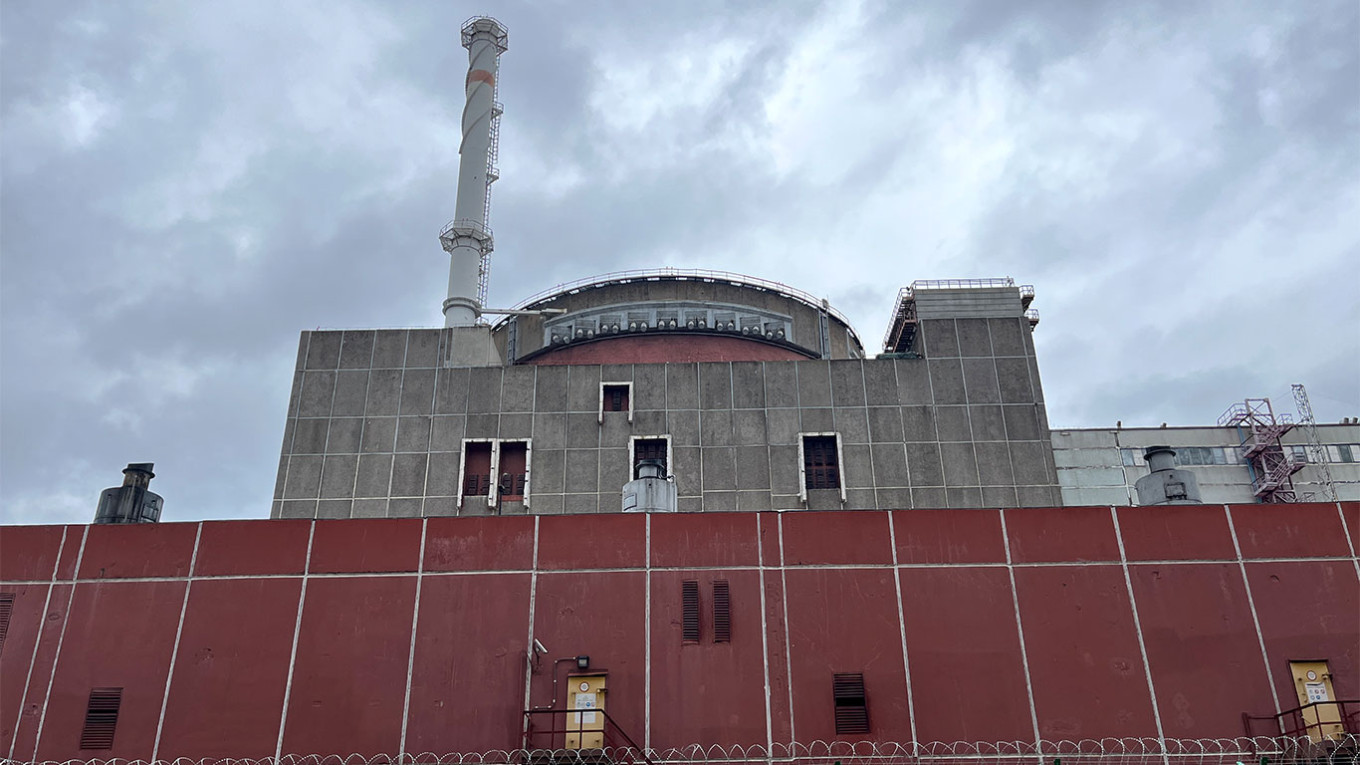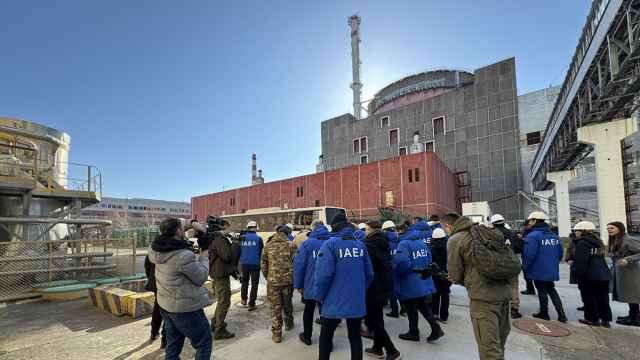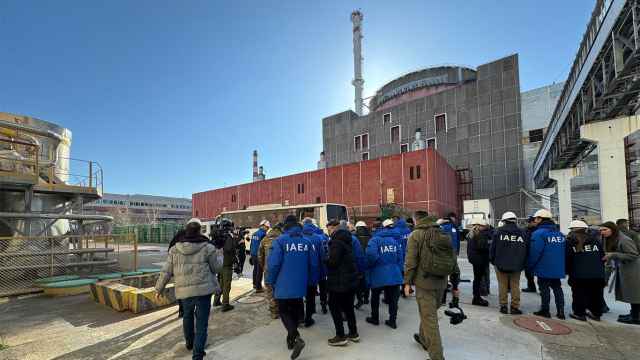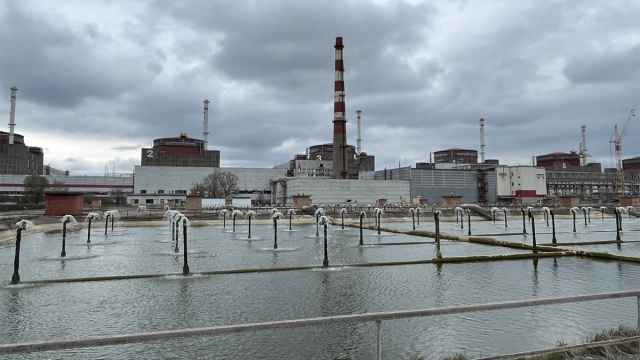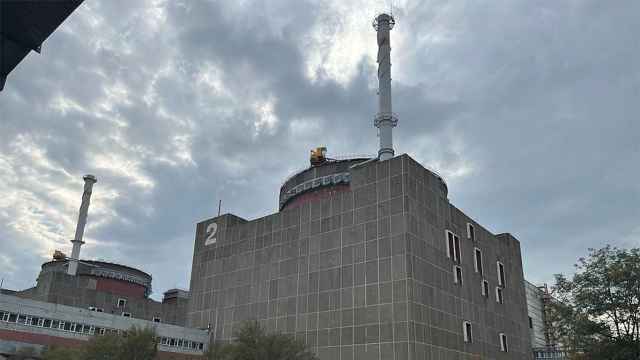Ukraine's occupied Zaporizhzhia nuclear power plant was briefly cut off from the power grid Monday, its Russian administrators and the Ukrainian atomic agency said.
The incident marked the seventh time that the plant, Europe’s largest nuclear power plant, had been cut off from the power grid since invading Russian forces took control of the plant in March 2022.
Despite officials in Kyiv saying that the nuclear plant was reconnected to Ukraine's electricity grid again after being offline for several hours, experts warn that such power cuts, which have become more frequent due to shelling, might be potentially dangerous for the nuclear facility.
What happened?
Ukraine's nuclear agency Energoatom accused Russia of carrying out an attack on Monday morning that caused the power cut, saying it was the seventh instance of the plant entering "blackout mode" since Moscow's troops took control in March 2022.
The Russian administration wrote on Telegram that “due to a high-tension line being cut, the plant lost its external electricity supply," adding that the causes of the outage were being investigated and that backup diesel generators were keeping it working.
According to Russia’s state nuclear company Rosatom, the radiation background at the plant was “normal.”
The plant was reconnected to Ukraine's electricity grid a few hours later, Ukraine said.
Is it dangerous?
Fighting around the nuclear power plant prompted fears of a nuclear disaster like the 1986 Chernobyl nuclear disaster in Soviet Ukraine, which directly caused hundreds of deaths and injuries.
According to Ukraine’s state nuclear company Energoatom, “after the loss of external power, which is vitally necessary to ensure the operation of the nuclear fuel cooling pumps in the fuel pools and nuclear reactors of the power units” and the plant’s diesel generators started operating automatically.
Energoatom said the generators had enough fuel reserves to last 10 days.
"If it is impossible to restore external power to the plant during this time, an accident with radiation consequences for the whole world may occur," it warned.
After the power connection was restored, the company said in a Telegram statement that “the risk of a nuclear and radiation accident has been minimized.”
According to Andrei Ozharovsky, an engineer-physicist and radioactive waste safety specialist, any emergency situations like cutting off the power grid “are extremely dangerous.”
Yet Ozharovsky noted that since the Zaporizhzhia nuclear plant doesn’t operate at its full capacity, its need for electricity has been reduced.
Zaporizhzhia halted power production in September and none of the nuclear power plant’s six Soviet-era reactors has since generated electricity, but the facility remains connected to the Ukrainian power grid for its own needs, notably to cool the reactors.
“The situation is not as catastrophic as for working reactors and the chances of a nuclear disaster are small,” Ozharovsky told The Moscow Times, adding that in the worst case, the tightness of the plant’s reactors might be broken.
The UN's nuclear chief Rafael Grossi, who has tried to negotiate with both sides to reach a deal on the safety of the plant, said that the "nuclear safety situation at the plant extremely vulnerable."
"We must agree to protect the plant now; this situation cannot continue," Grossi, who visited the Moscow-occupied plant in March 2023, said Monday on Twitter.
Why is the Zaporizhzhia nuclear power plant important?
The Zaporizhzhia nuclear power plant is the largest nuclear complex of its kind in Europe and among the 10 largest in the world.
Located on the Dnipro River, the plant used to supply around 20% of Ukraine's electricity and continued to function in the early months of Russia's offensive despite frequent shelling.
AFP contributed reporting.
A Message from The Moscow Times:
Dear readers,
We are facing unprecedented challenges. Russia's Prosecutor General's Office has designated The Moscow Times as an "undesirable" organization, criminalizing our work and putting our staff at risk of prosecution. This follows our earlier unjust labeling as a "foreign agent."
These actions are direct attempts to silence independent journalism in Russia. The authorities claim our work "discredits the decisions of the Russian leadership." We see things differently: we strive to provide accurate, unbiased reporting on Russia.
We, the journalists of The Moscow Times, refuse to be silenced. But to continue our work, we need your help.
Your support, no matter how small, makes a world of difference. If you can, please support us monthly starting from just $2. It's quick to set up, and every contribution makes a significant impact.
By supporting The Moscow Times, you're defending open, independent journalism in the face of repression. Thank you for standing with us.
Remind me later.


